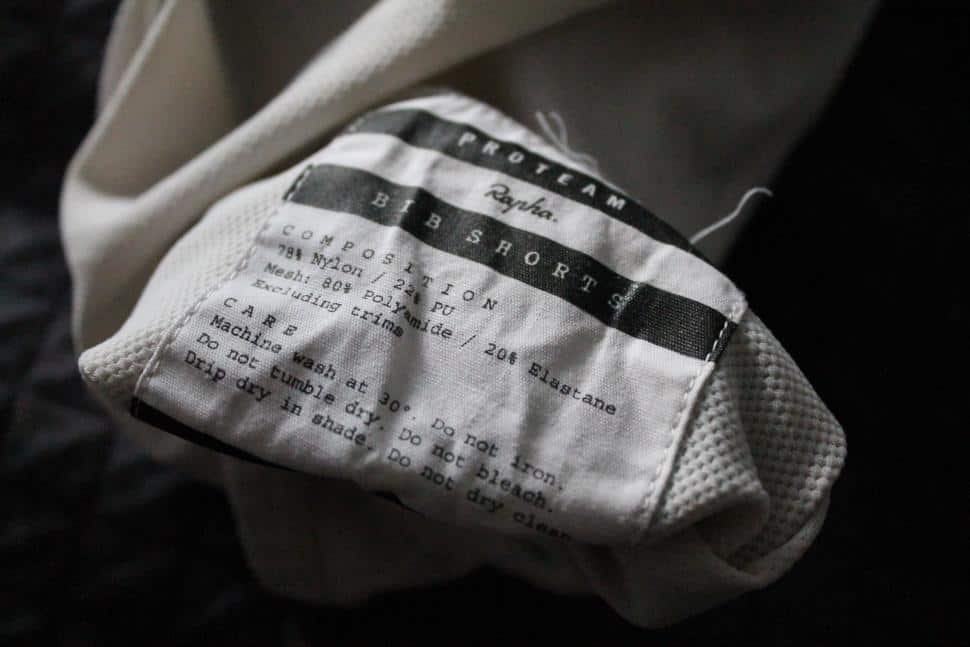
This article covers the best practices for washing cycling clothing.
These delicate clothing aren’t cheap, can cost up to $300 per piece, and require extra care to maintain their performance and prolong their lifespan.
Hand vs. machine wash cycling clothing
Hand washing is the gold standard when it comes to technical cycling clothing. It’s the preferred method of many cyclists because it’s gentle to delicate fabrics.
Hand washing requires more time and effort, but it’ll help preserve and prolong the lifespan of expensive cycling clothing.
If you don’t have the time to hand wash, then using the washing machine is OK. Just keep in mind the best practices that I’ve outlined below.
How to hand wash cycling clothing
- Wash ASAP and often. Wash your jersey, bibs, gloves socks as soon as you reach home. A wet, sweat-soaked kit is the ideal habitat for bacteria to grow. Bacteria like to feed on sweat minerals, and they’ll degrade and destroy the delicate lycra over time. If you’re not washing immediately (which you should), then at least rinse the clothing to remove the sweat and hang it dry.
- Read the labels. Although most cycling clothing has similar washing instructions, do read the labels. Sometimes you’ll be surprised to see that some would require extra care.
- Turn them inside out to protect the graphics and logo from getting scratched or tangled with others.
- Zip up the zippers to avoid tangling with other clothing in the washing bucket.
- Empty the pockets. Double-check that the back pockets are empty. Some commonly left items are energy bars and gel packaging and loose coins from the cafe you had your mid-ride coffee. Make sure that there are no leftover and spilled gels inside the pockets.
- Use mild washing detergent. Avoid fabric softeners, bleach, whiteners, or any other household cleaners.
- Use cold water. Room-temperature water is fine. Anything above 100ºF (38ºC) is not ideal and could damage the lycra fibers causing the fabric to sag.
- Let it soak for 10 to 15 minutes. Fully immerse the clothing in the bucket and let the water saturate the fabrics to allow the detergent to work its way to remove the bacteria and dirt.
- Rinse thoroughly. If you think you’ve rinsed enough, give it another rinse to be sure.
- Wash separately. It’s tempting to kill many birds at once by washing your cycling kit with other clothing. Don’t. You want to avoid cross-contamination, especially if your cycling clothing is full of dirt and mud.
- Close all velcros as they can catch and snag the lycra and damage the fabric.
How to machine wash cycling clothing
If you’re using a washing machine, keep these in mind, in addition to the best practices mentioned above for hand washing.
- Use a delicate cycle and cold water settings. You want the washing machine to be as gentle as possible to the delicate, technical fabrics. Some models have a Sports mode which is similar.
- Use a wash bag. Place all your kits in a wash bag. Ideally, you want a separate wash bag for the jerseys/gloves/socks, and bibs to avoid the bib straps getting tangled.
Drying cycling clothing
- Air dry under the shade. Squeeze the excess water, hang it up, and let it air dry. Never tumble dry. Some exceptions include reactivating the DWR (Durable Water Repellent) layers of a jacket.
- Dry it inside out to preserve the colors longer.

Alex Lee is the founder and editor-at-large of Mr. Mamil. Coming from a professional engineering background, he breaks down technical cycling nuances into an easy-to-understand and digestible format here.
He has been riding road bikes actively for the past 12 years and started racing competitively in the senior category during the summer recently.